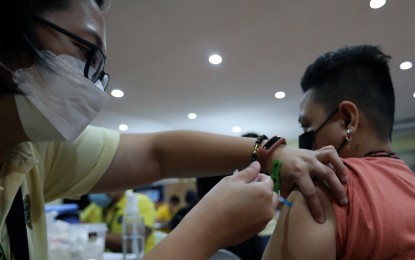
(File photo)
MANILA – The Philippines is able to keep its coronavirus disease (Covid-19) cases at low risk with a strong immunity wall, National Task Force Against Covid-19 chief, Secretary Carlito Galvez Jr. said on Tuesday.
The country's daily average Covid-19 cases of 510 from March 14 to 20 is 13 percent lower than the new infections in the previous week while only 17.8 percent or 619 out of the 3,473 intensive care unit beds are in use.
In contrast, fellow Asian countries China, Hongkong, South Korea, and Vietnam are experiencing surges.
During the “Talk to the People” report, Galvez said the massive vaccination drive and the continuous Prevent, Detect, Isolation, Treat, Reintegration (PDITR) strategy, especially in the National Capital Region and 47 other areas under Alert Level 1, are keeping cases at bay.
Galvez said the Philippines’ immunity wall is strengthened by the type of vaccines used, full primary series vaccination coverage, and the population’s natural immunity to the virus based on past experiences on surges.
“Unlike other countries, they rely on only one platform like mRNA (Messenger ribonucleic acid) or an inactivated platform. The Philippines has a portfolio of eight brands of vaccines, using almost all of the various platforms and we have proven that all of these vaccines are effective,” Galvez said.
American brands Pfizer and Moderna use genetically engineered mRNA vaccines that teach cells how to make a protein to trigger an immune response.
Meanwhile, vector vaccines like the single-dose Janssen and AstraZeneca use a modified version of a virus that is different from the virus being targeted to deliver important instructions to cells.
Sinovac uses inactivated virus particles that have been killed to stimulate our bodies to produce an immune response.
Two other crucial factors were the timely delivery of vaccines while infections were on an upward trend and prioritization of the vulnerable sectors – health care workers (A1), senior citizens (A2), and those with comorbidities (A3).
“We have done the massive vaccination at the time that there were surges and we immediately decided to administer a booster three months after the administration of primary boosters,” Galvez said.
Galvez reported that the A1 sector is 93.84 percent fully vaccinated, A2 is at 75.31 percent, and A3 at 93 percent.
He said to date, about 65 million of the adult population is fully vaccinated. (PNA)
